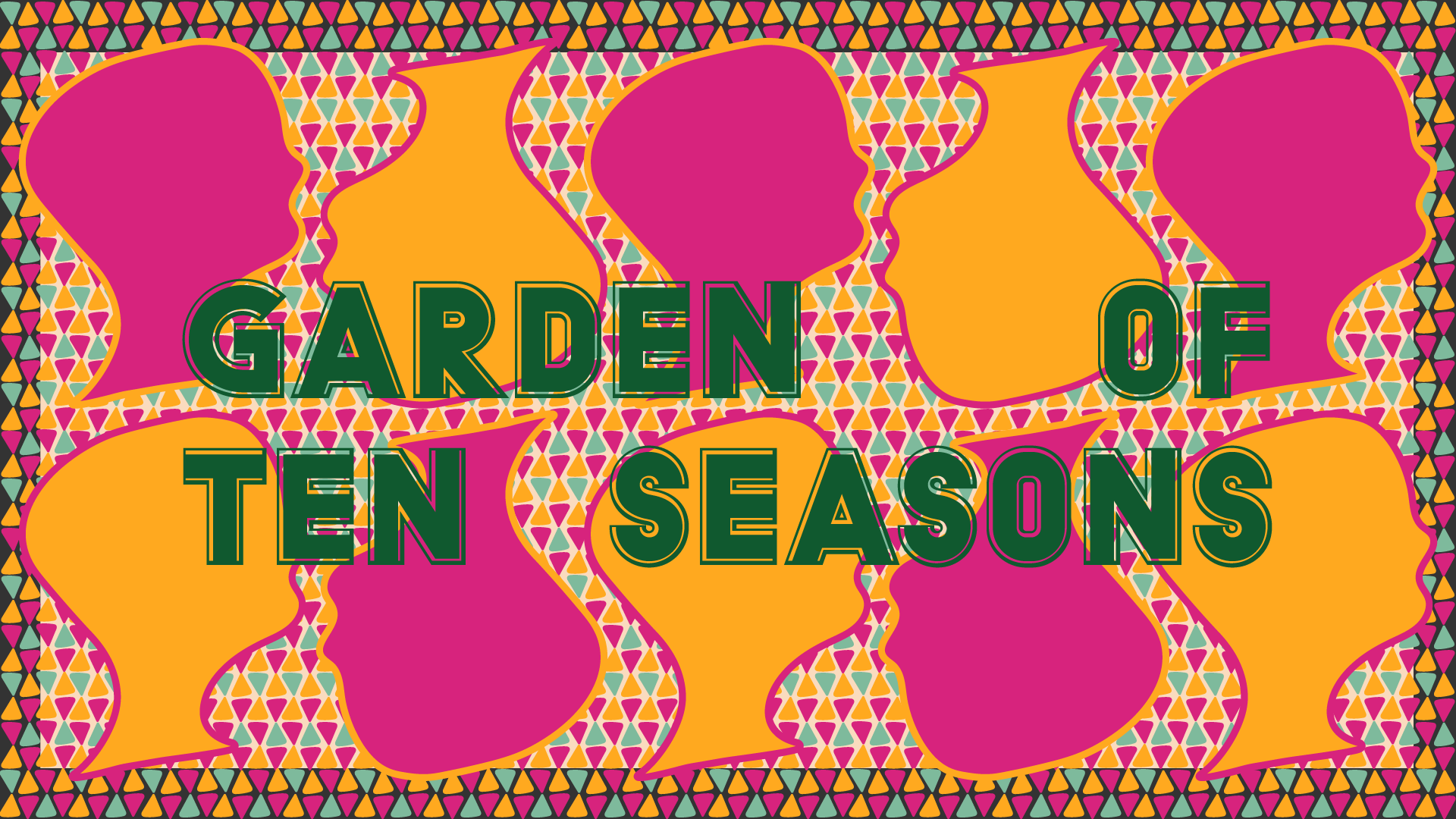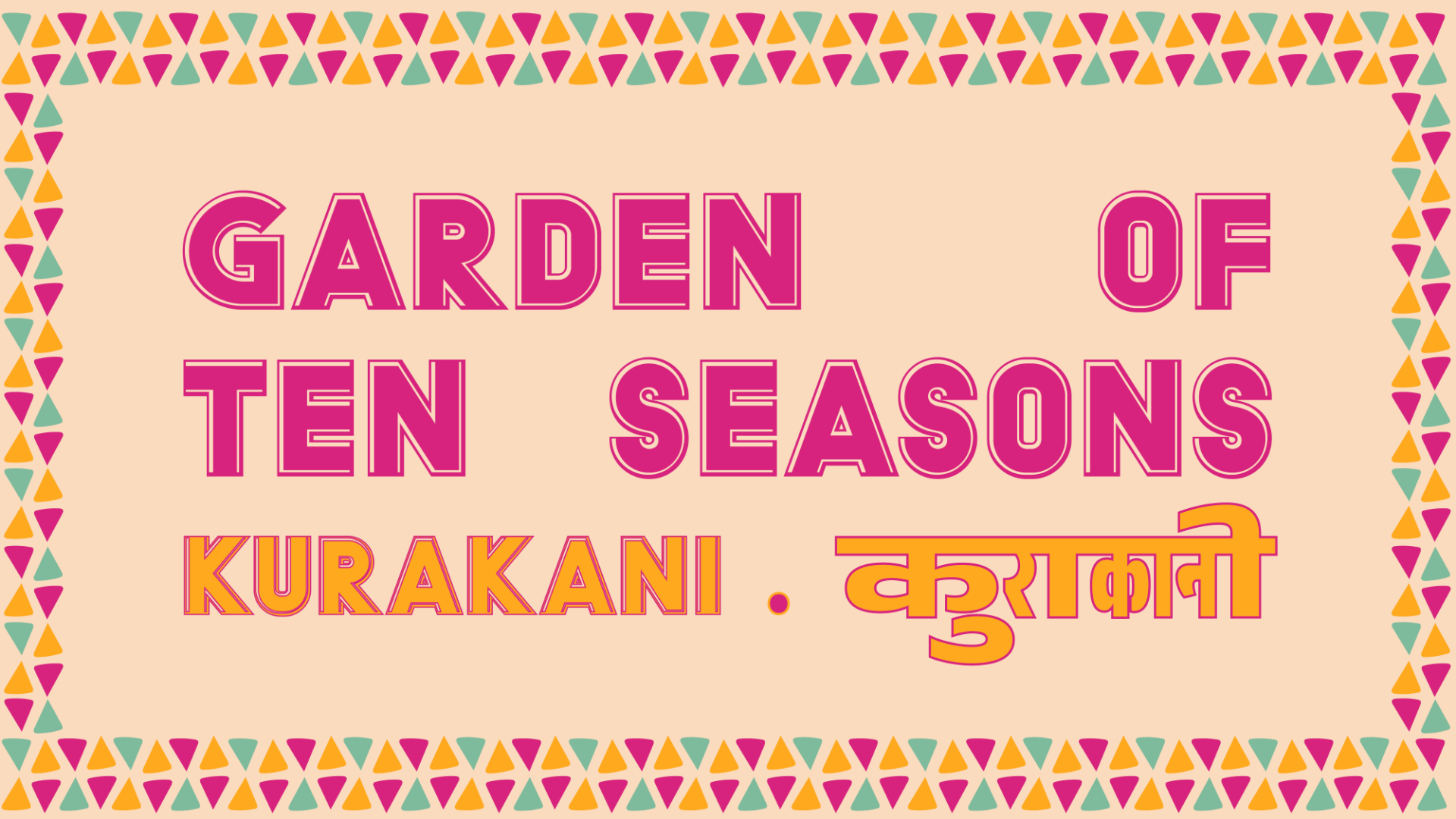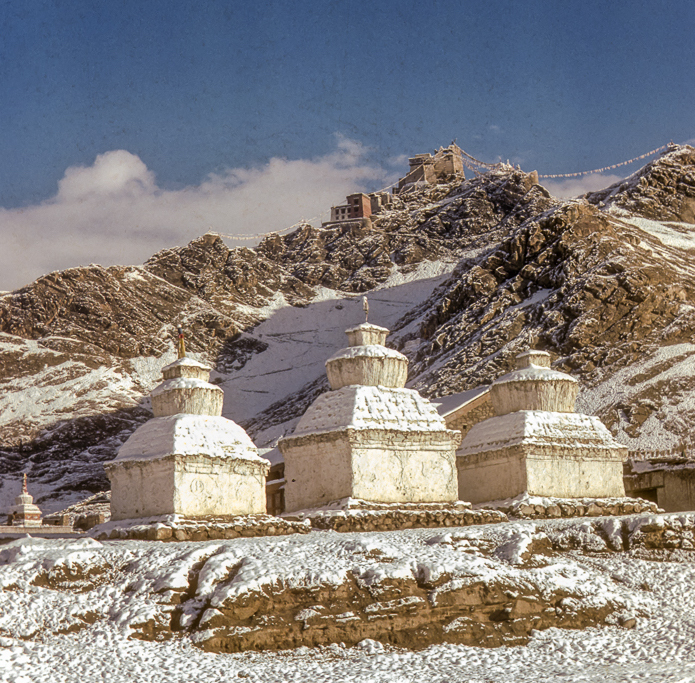Garden of Ten Seasons

Exhibition& PUBLIC PROGRAMMES
Echoing from the Kathmandu Triennale 2077
OPENING 10.06.2022 19:00
ON SHOW 11.06.–10.07.2022 Thursday–Sunday 14:00–19:00 (Closed on 25.06.2022)
With Andrew Thomas Huang, Antonio Pichillá, Aqui Thami, Artree Nepal & Urmila Gamwa Tharu, Ashmina Ranjit, Aziz Hazara, Baachi Devi, Batsa Gopal Vaidya, Brittney Leeanne Williams, Chan Kwok-yuen, Chet Kumari Chitrakar, Chija Lama, Citra Sasmita, Dal Bahadur Gurung, Ekaram Singh, Freddy Mamani, Hung Fai, Indu Tharu, Joydeb Roaja, Karan Shrestha, Köken Ergun & Satyam Mishra (Jai Nepal), Köken Ergun & Tashi Lama, Komal Purbe, Liliana Angulo Cortés, Lok Chitrakar, Madhumala Mandal, Mae Clarke, Manjula Devi Thakur, Mary Dhaphalany, Matei & Mona Ta’ufo’ou (part of Kautaha Painitu’ua), Mihaela Drăgan, Mireille Delismé, Mohamed Bourouissa, Nagendra Gurung, Nikau Hindin, Olga Chernysheva, Palati Devi, Pooja Gurung & Bibhusan Basnet, Puran Khadka, Rebati Mandal, Sakarin Krue-On, Sawangwongse Yawnghwe, Shashi Bikram Shah, Sheroanawe Hakihiiwe, Simon Soon, Subas Tamang, Subash Thebe Limbu, Sudhira Karna, Uma Shankar Shah, Wai Pong Yu, Zamthingla Ruivah
SAVVY Contemporary is a ground floor wheelchair accessible space. For further assistance please send us an email (communications@savvy-contemporary.com).
KURAKANI 11.06.2022 19:00
With Anil Limbu, Ashmina Ranjit, Dipti Sherchan, Karan Shrestha, Nischal Khadka, Priyankar Chand, Soydivision (Ariel Orah) with Pedro Oliveira, and Tenzing Sedon Ukyab Lama
SAVVY TOURS IN SAVVY TONGUES
11.06.2022 16:00 In Nepali
With the curators Sheelasha Rajbhandari, and Hit Man Gurung
12.06.2022 16:00 In English
With the curators Cosmin Costinaș, Sheelasha Rajbhandari, and Hit Man Gurung
23.06.2022 18:00 In Romanian
With curator Cosmin Costinaș
Working from within different cosmologies, when imagining the future of the 21st century, from politics to technology, we are also asking: Can we imagine art to remain a singular system, with a universal claim and a unified aesthetic? As we attempt to find solutions for the dilemmas of plurality in our troubled world, could art as a coherent concept even survive? And should it?
SAVVY Contemporary is honored to host the exhibition Garden of Ten Seasons – curated by Cosmin Costinaș, Sheelasha Rajbhandari, and Hit Man Gurung – in order to rake, water, and nurture these questions and seedlings that have composed Kathmandu Triennale 2077 which was held in Nepal’s capital earlier this year, as well as its precursor Garden of Six Seasons held in 2020 at Para Site in Hong Kong.
The project departs from questions debated in Nepal and around the world, related to discourses on decolonisation, pluralism of worldviews and systems – leaving behind any form of totalising claims, either by monocultural nation states or by Eurocentric canons and vocabularies. Nepal has undergone historic and dramatic changes after 2006, including the shift from a monarchy to a federal republic, with progressive debates and tensions around the basis of re-establishing the nation, as well as the devastating earthquake of 2015. These moments of reckoning amidst the uncertainties of our time have placed the country and its over a hundred ethnic, cultural, social, and caste groups, including Indigenous communities and categories with a long history of marginalisation, in a pioneering position for imagining ways of living together in the world.
Furthermore, conversations surrounding contemporary art, its genealogy, institutional and power structures, and the appropriate platforms for horizontal conversations with cultural practices of different lineage have also not only informed the Nepali art scene in the past decades but many other contexts around the world and have brought to the fore important questions about local culture and identity as well as the politics of global circulation of ideas and art forms.
A central position in this project is thus occupied by artists working with and from within multiple aesthetic and cosmological perspectives and meanings, manifesting the multiplicities that construct our kaleidoscopic global reality. Theirs are practices that often have been systematically excluded from the realm of art and designated by a colonial ethnographic gaze as craft, folklore, or at best, "traditional" art, even if these practices are constantly evolving and embodying the traces of their contextual transformation and of this often-disobedient instability. In this line of thinking, the project is particularly featuring contemporary practices where Indigenous perspectives operate in the field of technology, where bodies and traditions are queered, where objects and rituals are the field of continuously negotiated identities rather than essences, and where folklore is the battlefield of decoloniality, counter-culture, and criticality.
Seeking to expand the consideration of contemporary artistic practices, it includes materiality and media from various communities in Nepal and from around the world, including different forms and lineages of object, image, and sound making that transversed or unfolded in parallel to the fractures of the modern. The project discusses appropriate frameworks of understanding and bringing together these multiple aesthetic and cosmological lineages active today, from paubha painting in Nepal, ink art in East Asia, and barkcloth making in the Pacific to body marking and weaving around the world, and other languages often marginalised in global discourses on contemporary art. But the project is also looking beyond the dominant traditions in these contexts, showcasing practices from communities which have often been subjected to processes of internal colonisation by their own, often post-colonial, states and their official cultural narratives.
These are more than formal exercises as they seek to open a wider conversation about different cosmologies and meaning in the realms of spirituality, forms of healing, memory preservation, representation of mythology, and collective celebrations. This broadening of the field of what gets counted today as art has political implications as part of an effort to decolonise our conscience, moving beyond the category of art as defined by the colonial legacy of many specific contexts as well as of our shared global culture. These are shown in parallel with an effort to revisit the reception and influence of several figures from Nepali art history of the past decades.
The project is also crucially interested in Indigenous knowledge that is active and subversive, working towards the upending of patriarchal structures and dominant national frameworks, creating a new global solidarity of places and communities of resistance. Works from across continents are being exhibited, placing Nepal on a different geography, beyond the regions that it is commonly considered in. Bringing new constellations of coordinates is also pursued by thinking about Nepal among a list of other countries who have defined their modern identity along the complicated and imprecise narrative of being the sole countries in their regional contexts to not have been colonised, like Thailand and Tonga, creating many common experiences including delaying the urgency to decolonise their cultural narratives. The years of cataclysms in the past decades, the layers of destruction that have brought both trauma and resistance to the fore, the shared experience of contemporaneity as a recent and precarious bridgehead over catastrophe creates another community of memory alongside Nepal, drawn from different geographies, from Southeast Asia to Latin America. Nepal’s status as a country of mass emigration opens up yet another definition of an Internationale.
Lastly, in regards to the title and its sinuous evolution throughout the different stages of the project: one of the works in the exhibition, Citra Sasmita’s kamasan painting on a cow’s hide, opens a garden of female figures, fires, and various natural elements, composed whimsically in an unfolding of pansexual energy and power, imagining a secular and liberating mythology for a post-patriarchal future. Underneath it, handwritten in a disk of turmeric, the 14th century Balinese poem "The Harbor of Restless Spirit" introduces the Balinese calendar of ten seasons, and the possibilities each of them bring to life. In the first manifestation of the project, a garden of six seasons was referring to a real garden in Kathmandu, better known by its other name, Garden of Dreams, built by a dynastic prime minister in Nepal, in 1920. It was designed as an Edwardian neo-classical garden amidst Kathmandu’s urban fabric. The waves of change in the last century brought its six pavilions down to three. Climate change merged Kathmandu Valley’s famed six seasons into four. The Rana dynasty of the garden’s patron is long gone. So is the monarchy, swept away more recently by the revolution of this generation, the source of Nepal’s abundant critical energy that can teach so much.
TEAM
CURATORS Cosmin Costinaș, Sheelasha Rajbhandari, and Hit Man Gurung
Director Kathmandu Triennale Sharareh Bajracharya
Chair Person Siddhartha Arts Foundation & Kathmandu Triennale Sangeeta Thapa
TEAM SAVVY Contemporary
ARTISTIC DIRECTIOn Elena Agudio
PROJECT MANAGEMENT Onur Çimen
PROJECT ASSISTANCE Hubert Gromny
PRODUCTION TEAM Rafał Łazar, Santiago Doljanin, Simon v. Krosigk, Waylon D’Mello, and Willem van den Hoek
GENERAL MANAGEMENT Lema Sikod
COMMUNICATIONS Anna Jäger
GRAPHIC DESIGN Aditi Kapur
TECH Bert Günther
LIGHT Emilio Cordero
EVENT Production Lili Somogyi and Daniellis Hernandez
STREAMINg Boiling Head Media
COLLABORATION & SUPPORT This project is a collaboration between Kathmandu Triennale, SAVVY Contemporary, Para Site, Siddhartha Arts Foundation and Durjoy Bangladesh Foundation, with additional support by the Wellington and Virginia Sun Yee Trust. Some of the flights were supported by Turkish Airlines and Goethe Institute Mumbai.
THANK YOU Jagdish Moktan, Katherina Michaels, Matina Maharjan, and Shreeti Prajapati



